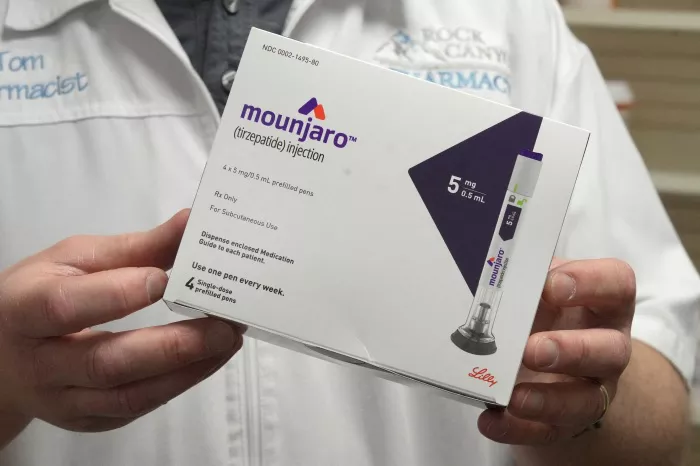Timothy grass allergy is a common allergic condition that affects millions of people worldwide. This article provides an in-depth exploration of timothy grass allergy, delving into its causes, symptoms, and management. Timothy grass allergy, often referred to as hay fever, is a seasonal allergic reaction triggered by exposure to pollen from timothy grass. It typically occurs during the late spring and early summer when the grass is in full bloom.
Causes of Timothy Grass Allergy
Timothy grass allergy is primarily caused by the immune system’s overreaction to specific proteins found in the pollen of timothy grass (Phleum pratense). When individuals with this allergy come into contact with the grass pollen, their immune system perceives it as a threat and releases histamines and other chemicals, resulting in a range of allergic symptoms. Understanding the mechanisms of this allergic response is crucial in managing timothy grass allergy.
Symptoms of Timothy Grass Allergy
Timothy grass allergy manifests with a variety of symptoms, which can range from mild to severe. Common symptoms of timothy grass allergy include:
Sneezing and Runny Nose: One of the hallmark symptoms of timothy grass allergy is frequent sneezing, accompanied by a runny or congested nose. This occurs as a response to the inhaled pollen.
Itchy and Watery Eyes: Itchy, watery eyes are another common symptom of this allergy. This is often a result of the pollen coming into contact with the eyes.
Throat Irritation: Timothy grass pollen can irritate the throat, causing a scratchy or sore feeling. This symptom can lead to persistent coughing.
Nasal Congestion: Nasal congestion is a result of the body’s attempt to block pollen from entering the respiratory system, causing a stuffy or blocked nose.
Fatigue: Individuals with timothy grass allergy may experience fatigue and reduced energy levels due to the body’s constant immune response.
Headache: Headaches can occur as a secondary symptom, often due to sinus congestion and pressure changes.
Wheezing and Shortness of Breath: In some cases, timothy grass allergy can lead to wheezing and shortness of breath, which may be especially problematic for those with asthma.
Skin Irritation: Skin may become red and itchy upon contact with the pollen, leading to hives or eczema in sensitive individuals.
It’s important to note that the severity of these symptoms can vary among individuals. Some may experience mild discomfort, while others may have more pronounced and disruptive symptoms.
Diagnosis of Timothy Grass Allergy
Diagnosing timothy grass allergy typically involves a two-step process:
Medical History and Symptom Evaluation: A healthcare provider will start by taking a detailed medical history, including the nature and duration of symptoms. They will also inquire about the timing of symptoms, as timothy grass allergy tends to be seasonal.
Allergy Testing: To confirm the diagnosis, allergy testing is conducted. This can be done through skin prick tests or blood tests (specifically measuring IgE antibodies). These tests determine the presence of an allergy and help identify specific allergens, including timothy grass pollen.
Cross-Reactivity and Timothy Grass Allergy
Timothy grass allergy is often associated with cross-reactivity with other grass pollens. Individuals with this allergy may also react to other grasses, such as Bermuda grass, Kentucky bluegrass, and ryegrass. This is because these grasses contain similar proteins, leading to a common allergic response. Understanding cross-reactivity is important, as it can help individuals with timothy grass allergy make informed decisions about their outdoor activities and exposure to different grasses.
Management and Treatment Options
Managing timothy grass allergy involves a combination of avoidance strategies and medical interventions. Here are some key approaches to managing this allergy:
Allergen Avoidance:
Minimizing exposure to timothy grass pollen is a fundamental strategy. This includes staying indoors on high-pollen days, using air purifiers, and keeping windows closed during peak pollen seasons.
Medications:
Antihistamines: Over-the-counter or prescription antihistamines can help alleviate symptoms like sneezing, itching, and runny nose.
Nasal Steroids: These prescription medications can reduce inflammation and congestion in the nasal passages.
Decongestants: Decongestants provide temporary relief from nasal congestion but should be used cautiously and for a limited duration.
Allergy Immunotherapy: Allergy shots or sublingual tablets may be recommended for individuals with severe or persistent allergies to induce tolerance over time.
Environmental Control:
Keeping indoor environments as allergen-free as possible is crucial. This includes regular cleaning, using allergen-proof covers on bedding, and keeping pets away from bedrooms.
Personal Protection: When spending time outdoors during the pollen season, wearing sunglasses and a hat can help reduce eye symptoms. Additionally, using a pollen mask can prevent inhalation of pollen.
Dietary Considerations: Some studies suggest that a diet rich in antioxidants, omega-3 fatty acids, and certain vitamins may help mitigate allergy symptoms. However, more research is needed in this area.
Timothy Grass Allergy and Asthma
Timothy grass allergy can be particularly problematic for individuals with asthma. Exposure to grass pollen can exacerbate asthma symptoms, leading to increased wheezing and shortness of breath. It’s essential for those with both conditions to manage their allergies effectively to prevent asthma exacerbations. This may involve working closely with a healthcare provider to adjust asthma medications and implement more rigorous allergen avoidance measures.
Children and Timothy Grass Allergy
Timothy grass allergy can affect individuals of all ages, including children. Parents of children with this allergy should take extra precautions to create an allergen-free environment and ensure their child’s comfort during the peak pollen season. Consultation with a pediatric allergist can provide guidance on age-appropriate treatments and interventions.
Timothy Grass Allergy Management in the Workplace
For individuals with timothy grass allergy, managing symptoms at work is crucial for productivity and well-being. Employers and employees can work together to create an allergy-friendly workplace. This may involve improving indoor air quality, implementing pollen-control measures, and accommodating employees with allergy-related medical needs.
Emerging Therapies and Future Prospects
As our understanding of allergies, including timothy grass allergy, continues to advance, so do potential treatment options. Research into new therapies, such as biologics and gene therapies, holds promise for more targeted and long-lasting solutions. These developments could significantly improve the quality of life for individuals living with grass allergies in the future.
Conclusion
Timothy grass allergy, or hay fever, is a common allergic condition that affects many individuals during the pollen season. Understanding the causes, symptoms, and management of this allergy is crucial for those living with it. By implementing effective strategies for allergen avoidance and seeking medical treatment when necessary, individuals with timothy grass allergy can enjoy a better quality of life and minimize the impact of this seasonal condition on their health and well-being. With ongoing research and advances in allergy treatment, the future holds promise for more effective and innovative solutions to manage timothy grass allergy.
[inline_related_posts title=”You Might Be Interested In” title_align=”left” style=”list” number=”6″ align=”none” ids=”2923,2916,2847″ by=”categories” orderby=”rand” order=”DESC” hide_thumb=”no” thumb_right=”no” views=”no” date=”yes” grid_columns=”2″ post_type=”” tax=””]


































